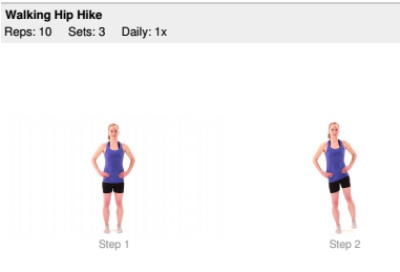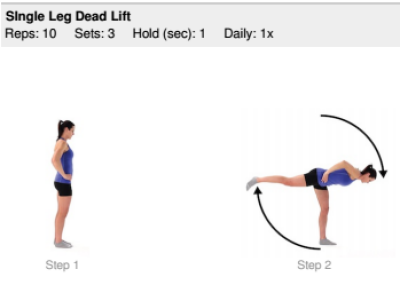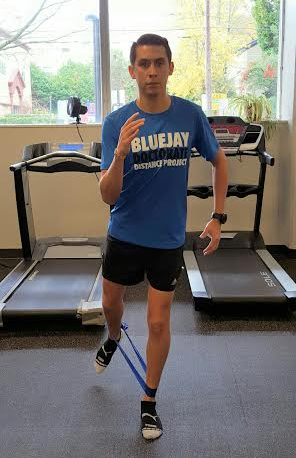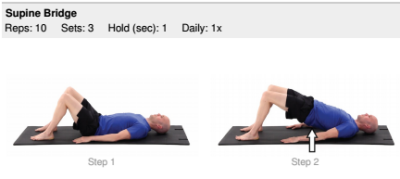Get Ahead WITH the Curve: Gluteal Activation for Runners
It is considered common knowledge runners need a strong core. Well, the core needs a mate. But who is suitable? The Glutes.
Gluteal muscles are often to blame for many running injuries. Have you ever finished a tough run and noticed your quads are sore, your knee hurts, hamstrings are tight, and your glutes feel, fine? How about the telltale sign of dirt marks on your lower inner calf from kicking yourself as you run? The culprit? Your gluteal muscles. These muscles can be lazy, and the rest of your body absorbs the additional load; And, we all know what happens when we have a lazy coworker/team member - someone isn’t happy.
Why are the gluteal muscles important?
The gluteal muscles are often considered the most important muscle when it comes to locomotion. The “glutes” include the gluteus maximus, gluteus medius, gluteus minimus, and tensor fascia latae. Collectively, they abduct, internally/externally rotate, extend, and most importantly, stabilize the hip during the midstance phase of gait. Without proper activation of these muscles, contralateral hip drop during running gait is commonly observed. With hip drop, we often see medial collapse of the knee that can contribute to additional stress on the iliotibial band (IT Band) and over-pronation of the foot.
So, how do we get the gluteal muscles to work?
Step 1: Glute Activation
Glute activation and motor programming is step one. Before you can truly strengthen your glutes, you must facilitate the neuro programming involved with locomotion to allow your gluteal muscles to work when they are called to duty. There are tons of glute activation drills out there, so I selected two you can perform before each and every run.
1. Hip Hike with Forward Walking

Clinician Notes: Perform before each run
Setup: Begin in a standing upright position with your hands on your hips.
Movement: Contracting your gluteal muscles, press through your stance leg to raise one hip as high as you can, lifting your opposite foot off the floor, then lower it back down as you step forward and repeat.
Tip: Make sure to focus the movement on your hip. Activate your core muscles to keep your trunk steady. Pretend there is an imaginary line between your feet as your right/left feet stay on their respective sides.
2. Single Leg Dead Lift

Clinician Notes: Work within a comfortable range without losing balance. - Contract your gluteal muscles as you return to standing. - Perform before each run.
Setup: Begin in a standing upright position with your hands resting at your waist.
Movement: Balancing on one leg, bend at your hips and slowly tilt your body forward while extending the other leg backward, then return to the starting position and repeat.
Tip: Make sure to keep your back straight, and don't let your knee collapse inward during the exercise.
Note: Bodyweight is all you need for these activation exercises. Perform 3 sets of 10 reps before each run.
Step 2: Glute Strengthening
1. Single Leg Stance w/looped resistance band around ankles – Midstance Running Gait

Movement: Standing on one leg, slight bend in the knee (like you’re running), upright posture (5-10 degrees of forward trunk flexion), and slowly moving your floating ankle posterolaterally.
2. Glute Bridges
Note: Perform 2-3 times per week

Setup: Begin lying on your back with your arms resting at your sides, your legs bent at the knees and your feet flat on the ground.
Movement: Tighten your abdominals, activate your glutes and slowly lift your hips off the floor into a bridge position, keeping your back straight.
Tip: Make sure to keep your trunk stiff throughout the exercise and your arms flat on the floor.
I have noted a few exercises above to facilitate glute strengthening specifically for runners. Research tells us runners need to have a strong core and sufficient gluteal activation/strength to facilitate efficient running mechanics. This is often a one-sided and complex relationship that requires special attention due to the neuromuscular recruitment patterns involved with locomotion. Glute activation and core strengthening are the dynamic duo for success.
It is always a great idea to consult your physical therapist, coach, and/or trainer to find the right program specific for you. Remember, Glute Activation + Strong Core = Happy Running
 Michael Herrera is completing his Doctor of Physical Therapy degree from Creighton University in Omaha, NE. He is currently doing a rotation at Northwest Portland Physical Therapy - Therapeutic Associates, Inc. Michael has worked with many runners of various levels as a student physical therapist, coach, and training partner to help incorporate injury prevention with performance training.
Michael Herrera is completing his Doctor of Physical Therapy degree from Creighton University in Omaha, NE. He is currently doing a rotation at Northwest Portland Physical Therapy - Therapeutic Associates, Inc. Michael has worked with many runners of various levels as a student physical therapist, coach, and training partner to help incorporate injury prevention with performance training.
Michael is from Montebello, CA and competed NCAA Division I Cross Country and Track and Loyola Marymount University. He has also assisted in coaching cross country/track at Don Bosco Tech and Salesian High School in southern California. He continues to run with friends of old, and new, as he explores the great running culture of Portland.
Connect With Us
see the latest from Fleet Feet PDX